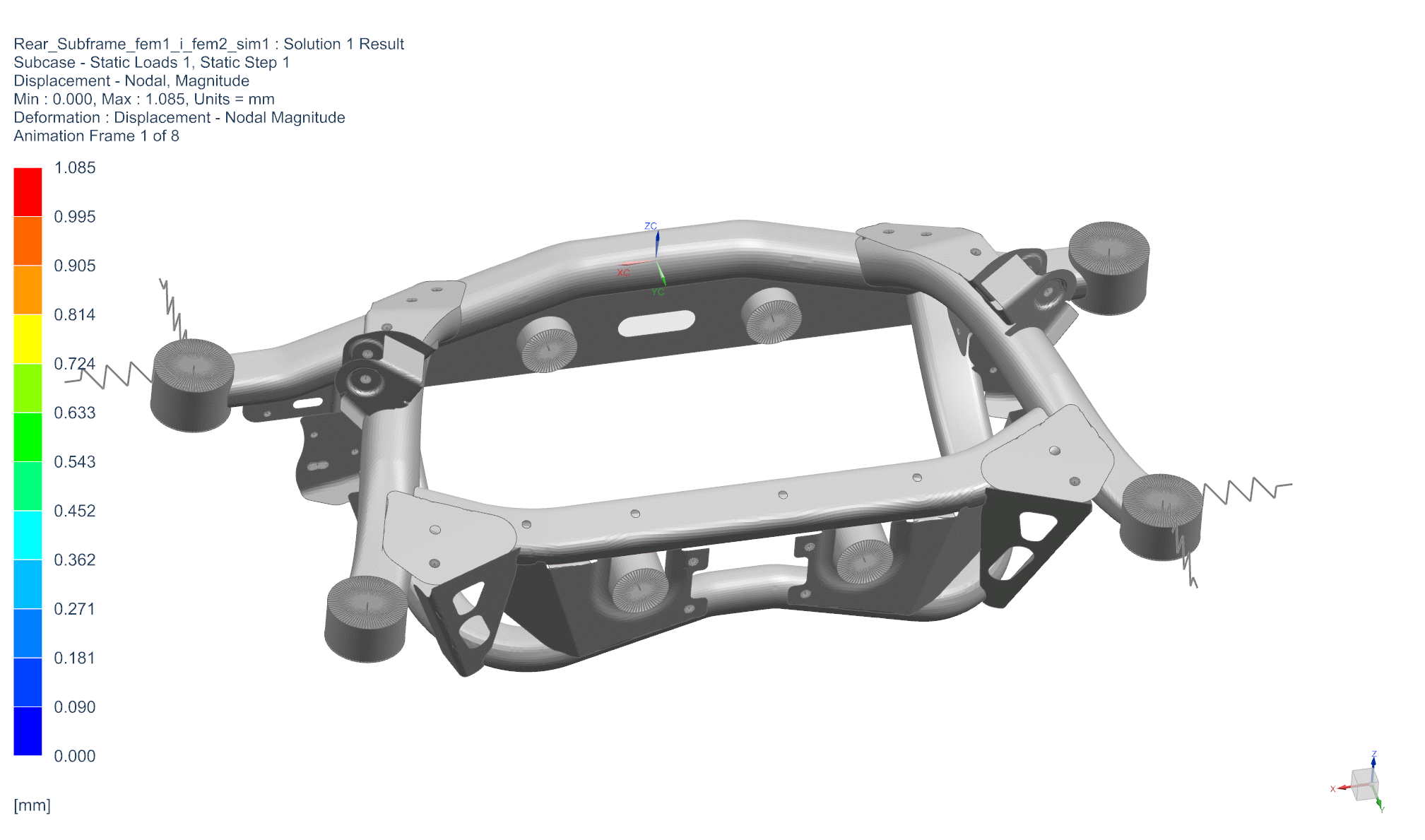Virtual Clamping Simulates Part Assembly Measurements
When inspecting welded automotive parts, it would often be beneficial to measure the part both in the free state and forced into a mechanical clamp that simulates the part position in the final assembly. When both measurements are not possible due to time constraints, quality control teams have so far faced a trade-off between getting clamped results and the free-state inspection data. With the Mapvision Virtual Clamp its now possible to obtain both the free state and clamped measurements during the same inspection process.
Best of Both Worlds with Mapvision Virtual Clamp
 If the part is only measured in a mechanical clamp, important information about the true manufacturing process is lost and potential deviations in the part in the free state can go unnoticed. The mechanical clamp fixture is also a major investment and also requires regular maintenance. Twisting the part into a clamp reduces the reliability and flexibility of the measurement system.
If the part is only measured in a mechanical clamp, important information about the true manufacturing process is lost and potential deviations in the part in the free state can go unnoticed. The mechanical clamp fixture is also a major investment and also requires regular maintenance. Twisting the part into a clamp reduces the reliability and flexibility of the measurement system.
With Mapvision Virtual Clamp, users can get both the important process information based on the free-state measurements, and the clamped results allowing a complete understanding of the true process while obtaining clamped measurements for assembly at the same time without extending the measurement cycle time.
Mapvision Virtual Clamp simulates clamping mathematically in real time. It provides all the benefits of mechanical clamping without physically clamping the part. The virtual clamping process, without twisting the part, removes all the disadvantages of mechanical clamping, such as significantly longer measurement times, losing important free-state measurement data, and maintenance needs of the fixture, the pneumatics and the datum plane.

Mapvision Virtual Clamp in Practise
In Mapvision Virtual Clamp, the effect of clamping is simulated by a Finite Element Method (FEM) analysis. Clamping conditions are accurately replicated in the simulation, including the defined clamping points and the sequence. Mapvision Virtual Clamp then uses the results to calculate how much twist there is in the part. This is the displacement of the part that a mechanical clamp would cause (ZR). The relations of how much displacement clamping causes at each measurement point create a part-specific mathematical model, called Mapvision Virtual Clamp.
The Mapvision Virtual Clamp requires that a FEM model of the part is available.
The Mapvision Virtual Clamp inspection does not require any extra measurements and the whole process can be performed in the same cycle time as the standard inspection. The part is measured in free state and the measurement results are stored in the Mapvision Result Database. Mapvision Virtual Clamp uses the calculated displacement (ZR) to generate the displacement in x, y and z directions for every measured point. Performed automatically, this calculation has no detectable effect on the measurement cycle time.
The results from Mapvision Virtual Clamp are stored in the Mapvision database together with the original free state results. Both sets of results are instantly accessible with the Green or Red part evaluation based on either the free state or the virtually clamped results.
The accuracy of Mapvision Virtual Clamp has been studied academically and its reliability is proven on production lines around the world. Practical tests have shown that Mapvision Virtual Clamp is in fact more accurate and realistic than the traditional mechanical method. It has already replaced the mechanical method as the de facto clamping standard in the production lines of several major OEM’s and leading Tier 1 automotive part manufacturers.
For more information: www.mapvision.fi




